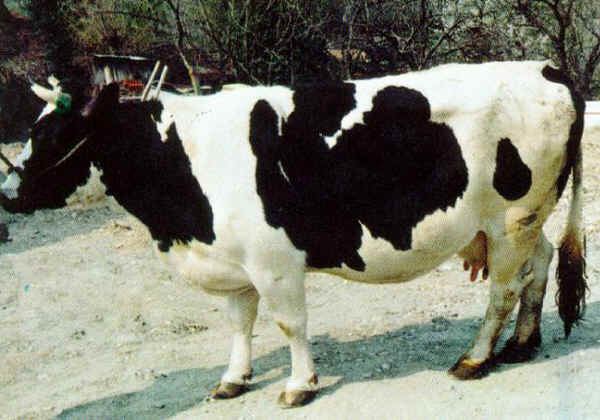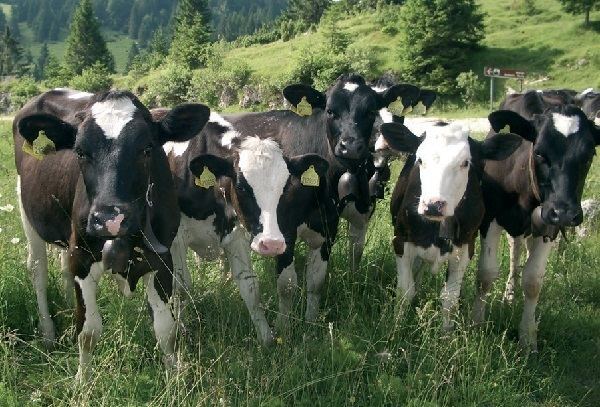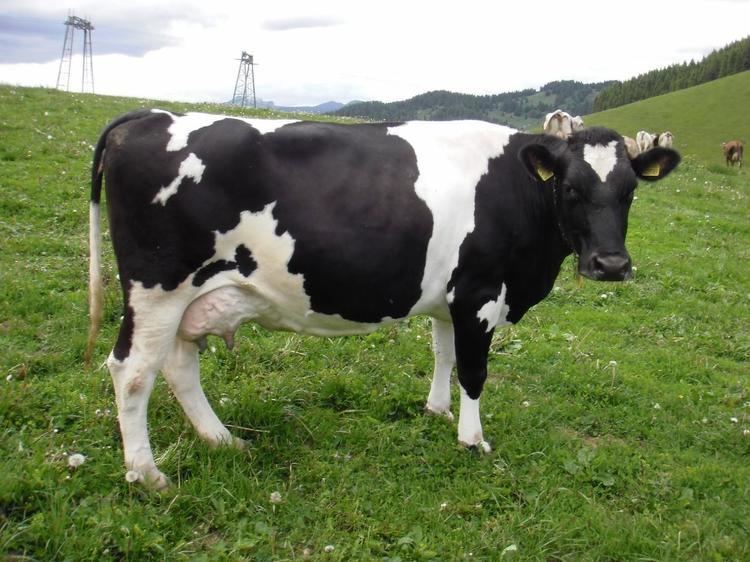Country of origin Italy Use mainly dairy | Standard MIPAAF (page 4) | |
 | ||
Conservation status FAO (2007): critical-maintained Other names BassaneseBindaBoccardaPezzata degli altipiani Similar Agerolese, Calvana, Valdaostan Red Spotted C, Modicana, Pustertaler Sprinzen | ||
The Burlina is a breed of cattle from the sub-alpine regions of north-east Italy. It is distributed mainly in the provinces of Treviso, Verona and Vicenza.:12 It is a dual-purpose breed, but is raised principally for milk production. It has been suggested that it may be related to the similar Bretonne Pie Noir breed of small pied dairy cattle in Brittany.:12
Contents

History

The origins of the Burlina are unknown.:12 It has suggested that it may be related to the Bretonne Pie Noir, a breed of small pied dairy cattle in Brittany, or that it may have been brought into Italy by Cimbrian migrants.:12

The Burlina was one of the most numerous breeds present in north-eastern Italy in the early 20th century, numbering tens of thousands of head. Until the 1930s, it was the commonest dairy breed on the Altopiano di Asiago, in the Colli Berici, on Monte Grappa and in the Monti Lessini. Numbers declined significantly during the First World War, under the Fascist regime and during the Second World War, and gradually during the 1950s and 1960s. It was mostly replaced by the Friesian, which was deemed more productive. In 1956 the population in the Veneto was recorded as 11,283. By 2008 it had fallen to about 300.:12
Characteristics

The Burlina is good-natured and has good maternal instincts. It is small, with a piebald black and white coat. It has good grazing capabilities well adapted to poor or marginal mountain regions, and is hardy, rugged and resistant to disease. Because of this there is less need for the use of antibiotics, which allows the production of quality milk. The Burlina is known also for its resistance to tuberculosis.
Use
The milk produced from the Burlina cow in alpine environments has a special grass flavour. Milk from this cow is notably used in the production of the regional Morlacco cheese which, like the Burlina breed itself, is included in the Ark of Taste catalogue.
